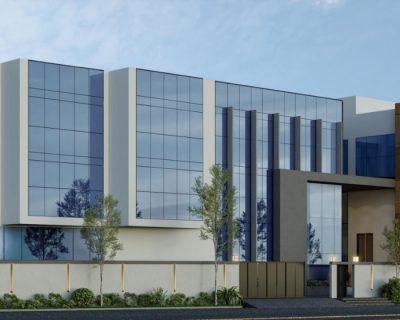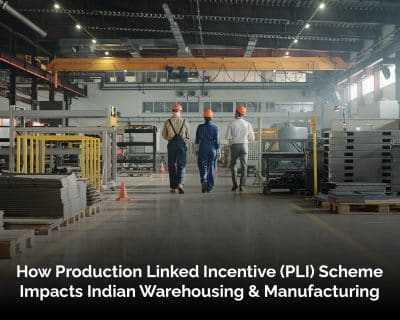Blog

Unlocking Solutions for Sustainable Warehouse Business Development
India’s warehousing industry is ready to reach new heights as it continues its spectacular development trajectory. This is encouraging, but if we don’t take a moment to consider how our warehouse operations are affecting the environment, we won’t be able to achieve any more landmarks. Rapid innovations in warehouse workflow assessments have strongly emphasized developing a sustainable warehouse system for any business, ensuring a lower environmental footprint and allowing for long-term progress.
Warehouse process research reveals a rising requirement for the development of sustainable warehouse workflows. Both new and established businesses need to be conscious of the effects their operations have on the environment. Sustainability should be a crucial pillar of any organization, and we, at FWS, take pride in assisting our clients to establish and adhere to sustainable warehouse process systems. Here are five of the most significant warehouse process procedures that your business has to implement in order to attain sustainability.
- Getting your warehouse in the proximity of end-user
This may be the most logical, but not the most obvious thing you can do to reduce the environmental impact of your warehouse operations. Moving the warehouse closer to the market results in a faster warehouse process flow, which requires less transportation, fewer exchanges of products, and produces lesser emissions.
Quicker delivery distances also imply less waiting time for clients and shorter supply chains for businesses, thus this sustainable warehousing procedure rewards in terms of practicality. When it comes to logistics and warehouse process considerations, location is everything. Given its long-term implications, it is possible that adapting this particular warehouse process flow will give the company a giant leap towards sustainability.
- Commitment to adopt renewable energy & boost energy efficiency
Renewable energy is an essential step in warehouse operations ad development, with an initial investment but a cost-effective and long-term sustainable return. Today, the majority of commercial warehouses are constructed with energy management systems that can function both off-grid and with renewable power sources like solar or wind. Another option is to develop a warehousing procedure that turns off inactive equipment, hence reducing inefficiencies. It is critical to implement energy-saving solutions throughout your warehouse work process to offer both savings and sustainable development.
- Including Ideal Insulation in Building Material
Poor or improper insulation, which allows climate-controlled air to seep through your warehouse, is yet another big energy drain in your warehouse operation. This commonly happens in the loading bay as your dock shutters are continuously being opened and closed to let trucks and goods move in and out as the workers perform the warehouse workflows.
Since you’re spending money & resources on equipment and power to heat or cool the air inside, so if that air escapes, your heating and cooling expenditures will rise, and your power will be squandered. To avoid this, use the proper dock closures and shelters. SOPs for heated or chilled warehouses should be incorporated into your warehouse operation to maintain the climate-controlled air that requires electricity inside. Conserving both energy and money, while enhancing the working conditions of your warehouse staff, would thus become an intrinsic element of your warehouse process flow.
- Introducing energy-saving equipment in warehouses
New innovations in interior lighting and HVAC technologies enable your company to comply with your warehouse workflow while reducing your environmental impact. You may lower the total environmental effect of your logistics and warehousing operation by utilizing ventilation and natural light.
When building a sustainable warehousing operation, effective ventilation should also be prioritized because cooling and ventilation utilize a lot of energy. Also, it’s crucial to remember that lighting and ventilation influence a number of aspects of your business including worker safety and productivity. so they shouldn’t be overlooked when talking about your warehouse workflow.
- Opting for Certified Eco-friendly Warehouses
Warehouses and industrial parks can certify their sustainability efforts through green certification schemes like the IGBC (Indian Green Building Council) and LEED (Leadership in Energy and Environmental Design). When you opt to connect your warehouse workflows with such sustainably managed warehouses, you can be assured that your business will flourish in a sustainable way. Also, considering certified green facilities can adapt to modern energy technologies and warehouse layouts, you can future-proof any upgrades you do to your warehouse space and operations.
Key Takeaways
The Indian warehousing market is expected to grow to INR 2243.79 billion by 2026, expanding at a CAGR of 10.90% which is a remarkable figure. With such a projection, we need to make sure that this development does not come at the cost of environmental harm. Sustainable warehouse workflow mechanisms and practices are critical for the transformation of conventional warehousing into environmentally friendly ones. This includes developing long-term supply networks to support your warehousing operation, identifying environmental challenges, analyzing alternative solutions, considering connected issues, and evaluating the long-term pros and cons. So next time when you analyze the growth of your warehousing business with your supply chain and warehouse management teams, make sure you put these strategies on the table to evaluate how sustainable your existing warehousing operation is and what you need to do going forward in order to achieve sustainable development and minimal environmental footprint.





